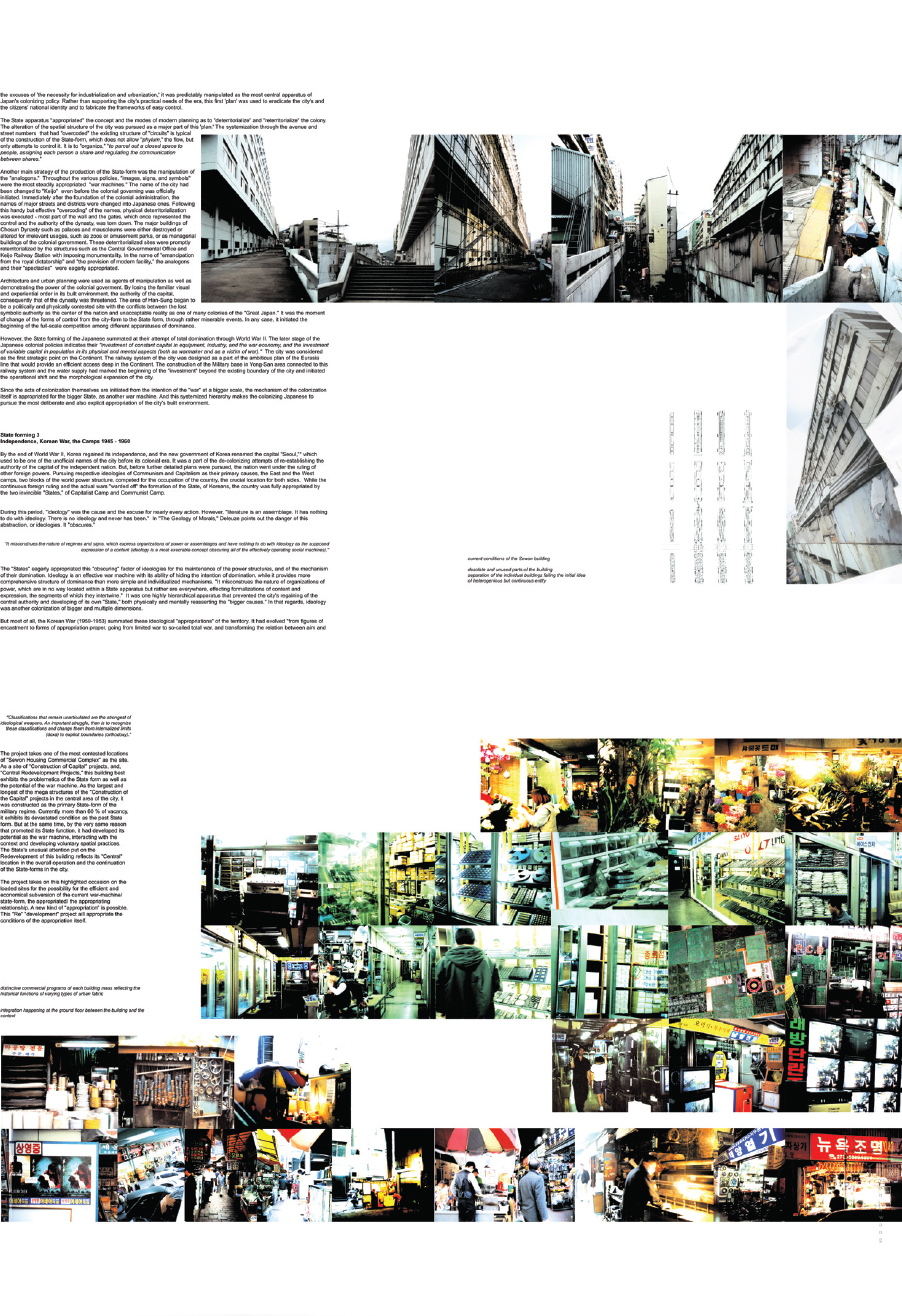
World Power Complex
| Location |
| Seoul, Yong-In, Korea |
| Client |
| NA |
| Status |
| Exhibited 2001, 2010, ongoing |
| Program |
Research, Design, and Exhibition
| Size |
| Team |
| Nahyun Hwang |

Rebuilding
From 1910, the colonial, post-war (1953-), and developmental urbanisms of Seoul have been characterized by ritualized "rebuilding" where the elaborate negation and re-establishment of the space is performed and propagated as the most effective and consistent apparatus of governance. This ubiquitous yet highly orchestrated demolition and construction have been a dominant modus operandi through which changing powers claim and control its newly acquired territory.
“State-Form”ing
The spatio-epistemological analysis of "Foundation," "Colonization," and "Nation Reconstruction" reveals the intense lineage of ”State-Form”ing in the peninsula and in the capital, and detects and predicts now proven, then future trajectory of a key strategy of contemporary post-developmental cities, where the “civilian” government and the “design-oriented” municipality aggressively appropriate the rhetorics of ecology and nature, enveloping the most aggressive Haussmanian urban policies in softer hues.
World Power Complex
The alternative re-development proposal for the World Power Complex (2001) engages the history and future scenarios for the World Power (“Se Woon”) Complex, the 1 km long mixed-use mega-structure and one of the most controversial demolition sites in the history of the city. Originally constructed by the coup d'état military government in the 60s and currently a fully integrated part of the city, the site experienced a tumultuous repetition of destruction and construction throughout history. Located in a now politically and economically marginalized yet historically central area in Seoul, the World Power Complex occupies the prominent axis of the “Four Gates’ Interior”, an intensified territory where the rituals of rebuilding are performed and the “state-form”s are realized. Designed in a high Modernist language by a pupil of Le Corbusier and constructed with a militant expediency, once a symbol of new national pride and control, the complex is now an “uncontrollable,” “dangerous,” and “recklessly disorganized” spontaneously urban realm. Predicting the government’s then (2001) future plan for a complete demolition justified by the construction of the “World Power Green Axis Park Plan” by the Metropolitan Government of Seoul (2006), the proposal aims to develop an architectural conceit that appropriates the state’s political appropriation of the built environment in turn. Challenging the premise of destruction for progress and a binary understanding of space, the proposal articulates a scenario of mega-scale park that allows and supports an alternative mode of territorial assemblages that exists already on the site. The project proposes the possibility of building without un-building its past.